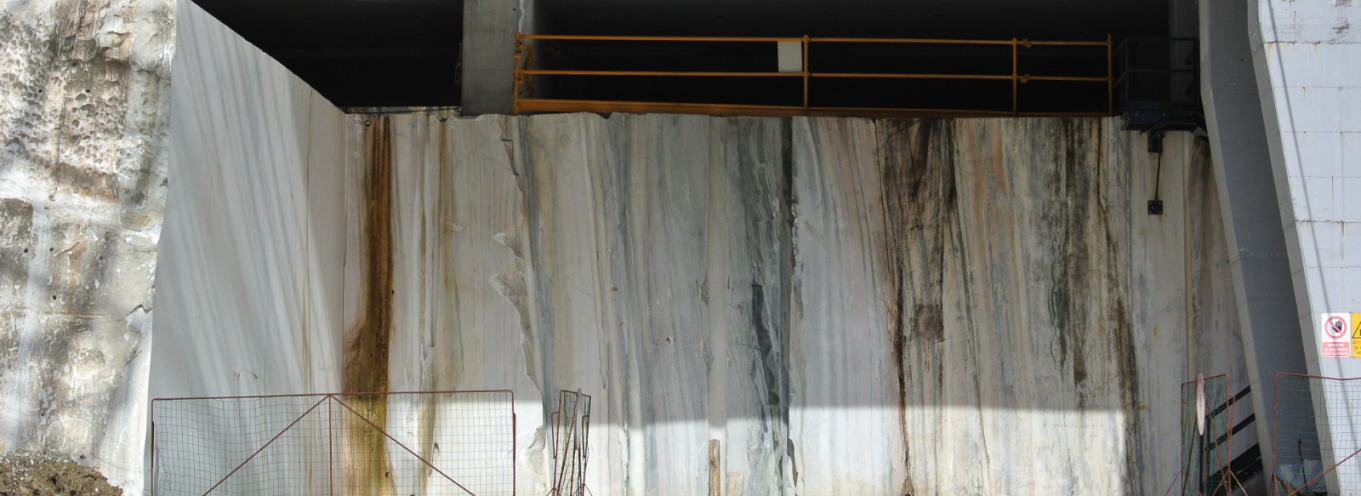Veneranda Fabbrica del Duomo di Milano
The Veneranda Fabbrica del Duomo di Milano is the historic institution responsible for the construction and enhancement of Milan’s Cathedral Church. It was established in 1387 by Gian Galeazzo Visconti, first Lord and then Duke of the City. Since then the Veneranda has worked with a great sense of responsibility across diverse operational sectors, as well as welcoming over 2 million tourists a year who visit the monumental complex in addition to worshippers.

The Candoglia Marble
The history of Candoglia marble, the material from which the entire Duomo is constructed, consists of a long journey made up of different stages, beginning with its excavation and ending with its placement on the monument. Uphill from the hamlet of Candoglia in the district of Mergozzo, in the Italian region of Piedmont, the living source of Milan Duomo is found, the quarry from which originates the marble used for the Cathedral and from which it takes its name. It is here that the material is extracted, cut, and roughly outlined by specialist workers before continuing its journey towards Milan. Subsequently, the marble arrives at the marble yard, the workshop at the entrance to Milan where the detailed working takes place to obtain the ashlars, architectural and decorative elements, sculptures and statues.
his site is equipped with the most up-to-date techniques available today and employs a highly-skilled workforce including milling and filing workers, square-cutting marble workers, sculptors, apprentices, and manual laborers. The pieces of marble carved in the marble workshop, by this point, true works of art, finally arrive at the Duomo’s construction site, the worksite located at the monument that allows the workers to directly work on the Cathedral itself. This place is still today the home of important operations: restoring and conserving the stonework, installing and updating technological systems, positioning decorations and structures from the marble yard, installing stained-glass windows, paintings, wooden and metal artifacts, keeping the original grandiose complex efficient, preparing liturgical vestments and furnishings, and providing the decorations for celebrations.
The Duomo Museum
The Duomo Museum houses the artifacts of over six centuries of the Cathedral’s construction and is the treasure chest of some of the works that best recount the history of the Duomo, from its origins to more recent times. The Museum has grown over time and has enriched its rooms and collections as a result of the ceaseless work of replacing and conservating objects of art and construction from the Duomo.


Archive and library
The Archive and Library preserve the documentary and book heritage that the Veneranda Fabbrica has produced and collected in over six hundred years of history over the course of its activities: more than six centuries recounted through a myriad of testimonies that have been carefully conserved here since the beginning of its construction. We are talking about an incredibly large heritage, which includes 5,000 folders containing an infinite number of reports, correspondence, drawings, 2,700 accounting records, over 2,000 designs, and over 90,000 phototypes. These materials, together with publications held in the library, provide a complete overview not just of the Duomo’s history, but that of the entire city of Milan.

Music Chapel
Milan Duomo’s Music Chapel is the oldest Milanese cultural institution, uninterruptedly active since 1402 to today. Its musical heritage consists of music by its maestros, written over the course of centuries and that continues to be enriched today. Music is performed at the Duomo every Sunday for the Eucharist at 11am and religious festivities, according to the liturgical calendar. In 1402, Veneranda Fabbrica deputies nominated the Music Chapel’s first maestro: the musichus Matteo da Perugia. The figure of chapel master had become necessary with the introduction of polyphony, i.e. the simultaneous singing of one or more melodies. At the end of his mandate, the Chapel’s organization was complete: maestro, organist, assistant maestro, and adult and child singers.
Join us
Your gesture can really make a difference! Discover our projects and support the restoration of the Milan Cathedral.

